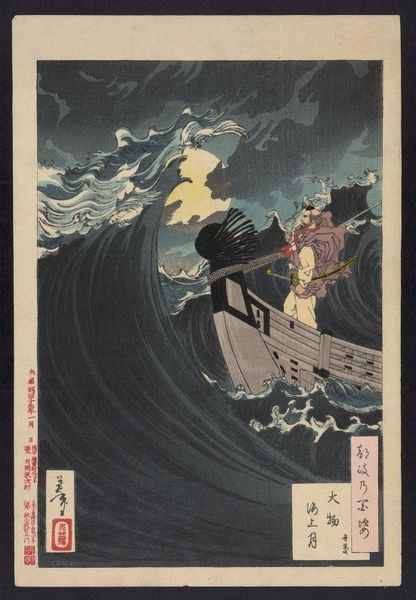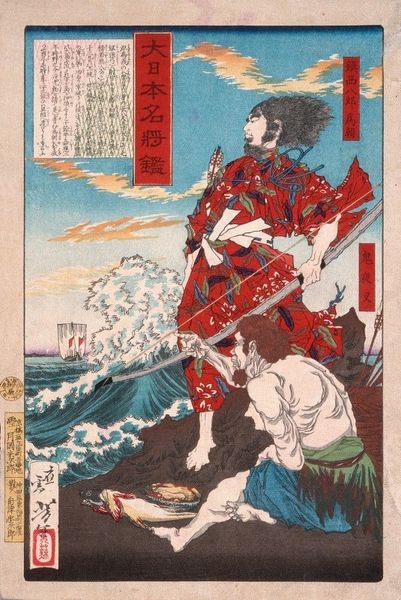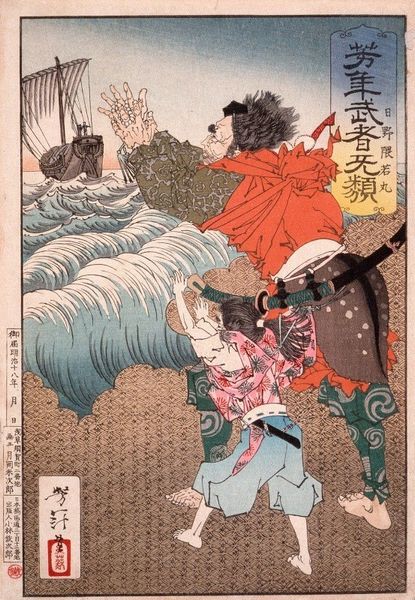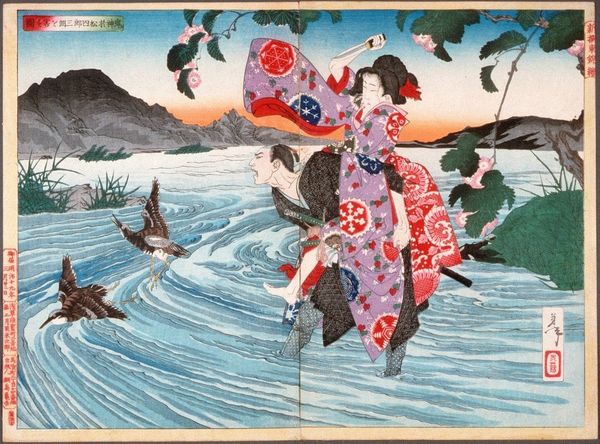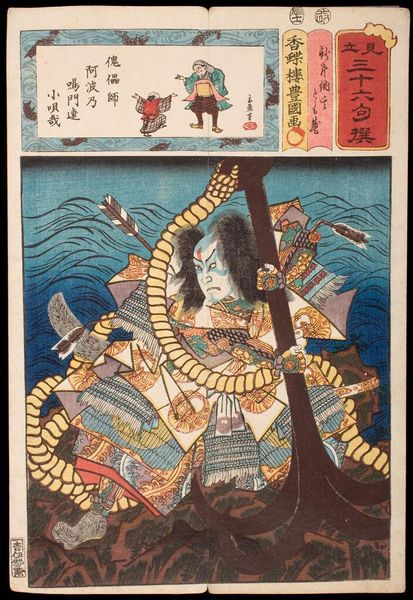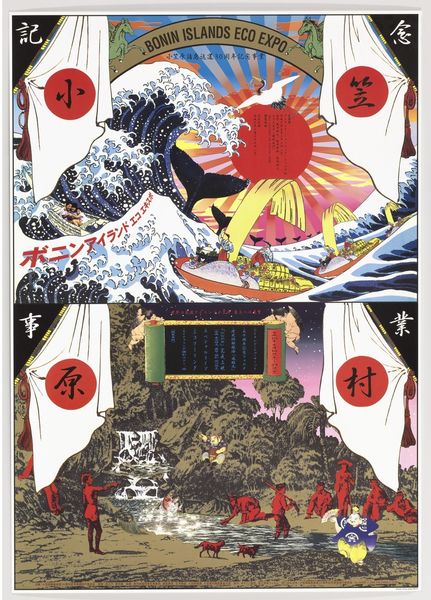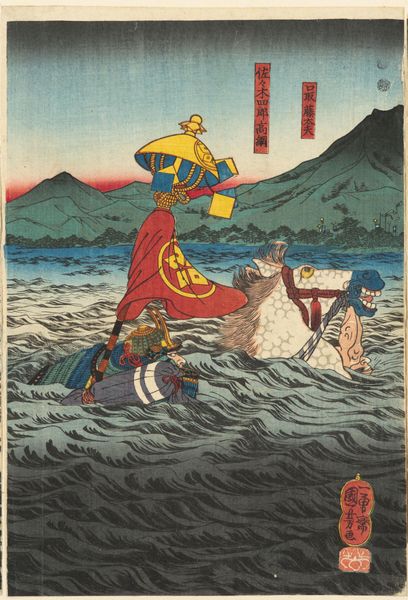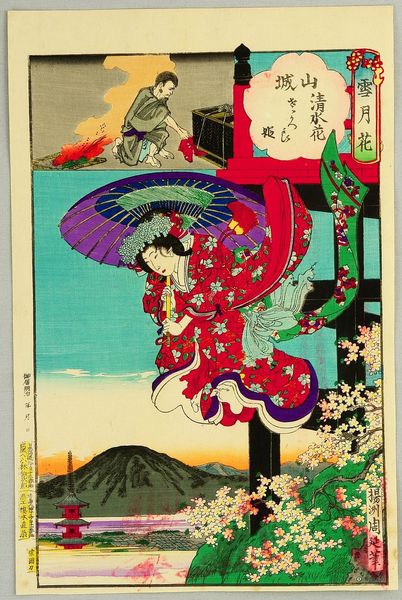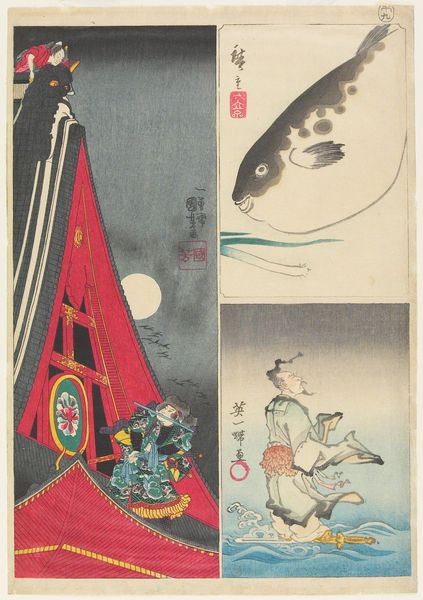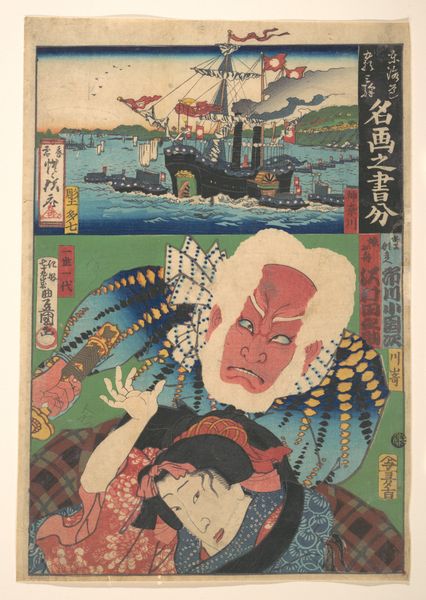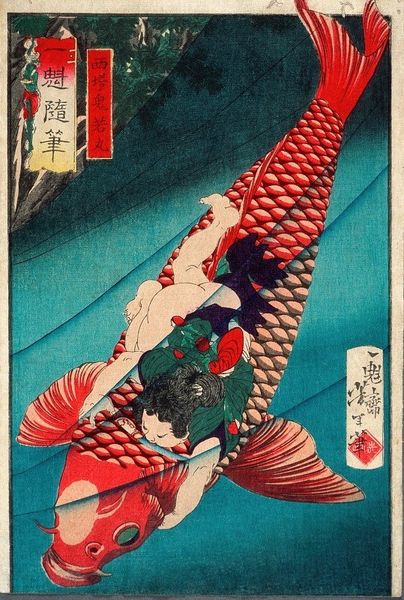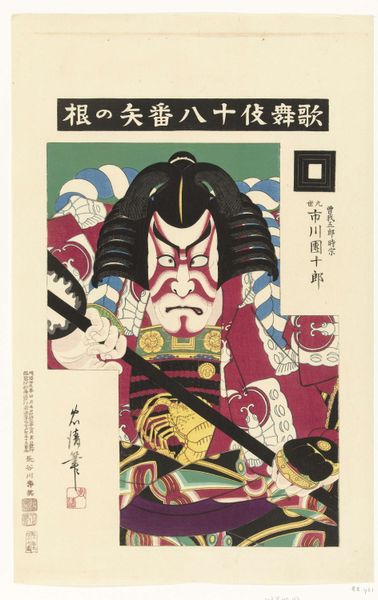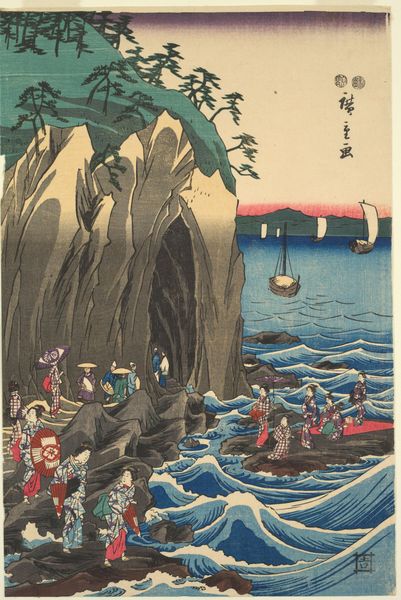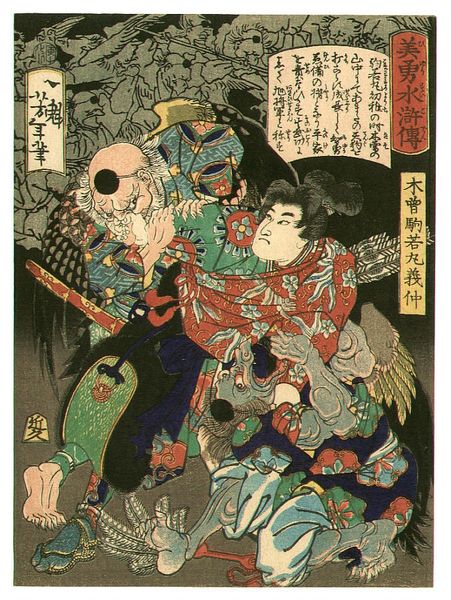
Copyright: Tadanori Yokoo,Fair Use
Editor: We're looking at Tadanori Yokoo’s 1971 print, "Chisetsu Yumiharizuki." It feels like a dynamic scene from a play, maybe a Kabuki performance. The colours are vibrant, and the composition is quite busy with figures and text. What strikes you when you see this poster? Curator: The visual cacophony, in fact. Yokoo takes the traditional ukiyo-e aesthetic and blasts it into the psychedelic era. Look how he merges distinct scenes – battle on the waves, figures emerging from the landscape, even textual elements – blurring boundaries. How do you think the choice to reproduce this as a poster would affect it’s reach, back in the early 70's? Editor: I imagine it made it more accessible, moved it from the gallery to the streets, right? Turning traditional subject matter into mass-produced, almost disposable art. Curator: Precisely. Yokoo engages in a kind of cultural critique, questioning the high/low art divide and playing with the very idea of Japanese identity. He’s not just depicting a scene; he's deconstructing the conventions of ukiyo-e and challenging its perceived authority, through the medium of Pop Art. Consider also the overt sexuality embedded in this artwork through phallic symbol imagery, and in direct conflict with historic censorship of said imagery, and one must consider how this work subverts the idea of institutional gate-keeping. Editor: So, the poster format is crucial to the piece’s message about cultural accessibility and, to an extent, cultural subversion. Curator: Exactly. The "Chisetsu Yumiharizuki" poster isn't simply a reproduction; it's an active statement on how art is circulated and consumed in modern society, and what rules of behaviour people impose on themselves. Editor: I never would have thought about all that just from looking at it! I guess it makes you really consider art’s role in societal dialogue. Curator: Absolutely. It encourages us to ask: Who decides what is art, who has access to it, and what statements do the images contain about acceptable modes of public behavior?
Comments
No comments
Be the first to comment and join the conversation on the ultimate creative platform.
